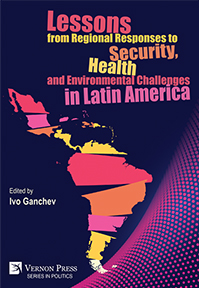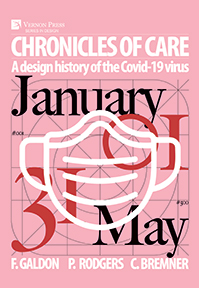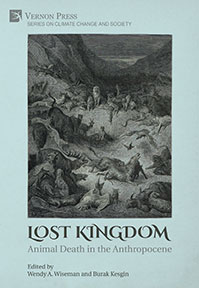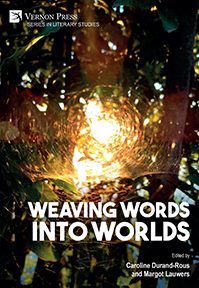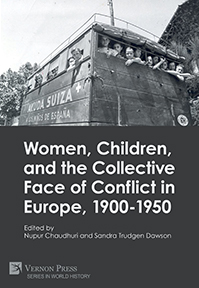Search
Browse
by Publication status
by Subject
Anthropology (26) Art (124) Business and Finance (26) Cognitive Science and Psychology (54) Communication and Journalism (45) Economics (62) Education (66) History (149) Human Geography (22) Interdisciplinary (42) Language and Linguistics (129) Law (16) Music Studies (18) Philosophy (157) Political Science and International Relations (103) Sociology (304) Statistics and Quantitative Methods (20)by Series
Series in Literary Studies (65) Series in Philosophy (59) Series in Education (51) Series in Sociology (42) Series in Politics (32) Series in World History (32) Bridging Languages and Scholarship (31) Series in Language and Linguistics (25) Cognitive Science and Psychology (20) Series in American History (20) Series in Philosophy of Religion (20) Series in Art (19) Critical Perspectives on Social Science (16) Series in Cinema and Culture (16) Curating and Interpreting Culture (15) Series in Critical Media Studies (14) Series on the History of Art (14) Series in Anthropology (13) Series in Business and Finance (13) Economics (13) Series in Music (12) Series in Communication (9) Series in Performing Arts (9) Philosophy of Personalism (8) Series in Law (8) Series in Economic Methodology (7) Series on Climate Change and Society (7) Women's Studies (7) Classics in Economics (6) Series in Economic Development (6) Philosophy of Forgiveness (5) Series in Built Environment (5) Series in Economic History (5) Series in Philosophy of Science (4) Series in Social Equality and Justice (4) Series on the History of Science (4) Serie En Estudios Literarios (3) Serie en Sociología (3) Series in Contemporary History (3) Series in Creative Writing Studies (3) Series in Design (3) The Interdisciplinary Built Environment (3) Serie en Comunicación y Medios (2) Serie en Historia (2) Series in Heritage Studies (2) Series in Innovation Studies (2) Series in Philosophy of Race (2) Serie en Ciencias Políticas (1) Serie en Entorno Construido (1) Serie en Estudios Culturales (1) Serie en Filosofía (1) Serie en Filosofía de la Ciencia (1) Serie en Música (1) Series in Classical Studies (1) Series in Economics of Technological Change (1) Series in Urban Studies (1)by Language
English Spanishby Author
Browsing with filters

Lessons from Regional Responses to Security, Health and Environmental Challenges in Latin America
Edited by
Ivo Ganchev, Founder of the Centre for Regional Integration, UK
Availability: In stock
358pp. ¦ $95 £80 €88
What is the role of regional organizations in maintaining security across different parts of Latin America and the Caribbean (LAC)? How did COVID-19 impact states in the region and what types of collective action have helped respond to public health emergencies? In what way is LAC environmental policy formulated and what broader lessons can be drawn for the Global South? This edited volume addresses these questions, revealing the reasons behind the successes and failures of LAC regional responses to collective challenges as well as their limitations and potential for future improvement. It contains 11 chapters, authored by 16 authoritative academics who employ methodologically-diverse perspectives. Each chapter provides insights that would be of interest to scholars, students and policy-makers working on the regional governance of LAC and the Global South. The contributions are thematically organised in three parts and produced with pragmatic considerations in mind, discussing existing and potential real solutions to pressing issues.
Chronicles of Care: A Design History of the COVID-19 Virus
Fernando Galdon, Royal College of Art, UK
et al.
Availability: In stock
372pp. ¦ $76 £61 €71
The Covid-19 crisis and the designed interventions that the authors have catalogued in this book prove definitively that design does care. The authors documented this as it evolved every day from the 1st January 2020 to 31st May 2020 inclusive. Then they looked at all of this care and caring from the point of view of design and, by the sheer volume of design interventions they have documented, illustrate that design is good in a crisis. What the Covid-19 pandemic illustrated is that for the first time in modern history, capital was totally irrelevant. Money could not save your life. Only design could. Rapidly designed masks, shelters, hospitals, instructional posters, infographics, dashboards, respirators, sanitisers, virtual and local communities emerged to save us. From January 2020, design became king. The Covid-19 global pandemic presented an ontological reality; design is more than margins or profit. In fact, design became extremely valuable when it stopped concentrating on those things and started to care about peoples’ lives. This brief episode in history is still repositioning the status of design and reconfiguring its signifier from consumption to care. The contents of this book cover the outbreak, lockdown, and the beginning of the reopening in the UK. In between, the book functions as a history of pandemic crisis design interventions. As such it is a “research-in-the-moment project” where we have illustrated our thoughts and insights in tables, charts and diagrams. We have accepted all design interventions as valid and given them the same role and status by presenting each of them in a standard format. No curation. No selection. No position. The task of critical analysis must follow – perhaps by us, certainly by others.
Lost Kingdom: Animal Death in the Anthropocene
Edited by
Wendy A. Wiseman, University of California Santa Barbara
and Burak Kesgin, Beykent University
Availability: In stock
378pp. ¦ $115 £92 €107
The authors in ‘Lost Kingdom’ grapple with both the catastrophe of mass animal extinction, in which the panoply of earthly life is in the accelerating process of disappearing, and with the mass death of industrial animal agriculture. Both forms of anthropogenic violence against animals cast the Anthropocene as an era of criminality and loss driven by boundless human exceptionalism, forcing a reckoning with and an urgent reimagining of human-animal relations. Without the sleights of hand that would lump “humanity” into a singular Anthropos of the Anthropocene, the authors recognize the differential nature of human impacts on animal life and the biosphere as a whole, while affirming the complexity of animal worlds and their profound imbrications in human cultures, societies, and industries. Confronting the reality of the Sixth Mass Extinction and mass animal death requires forms of narrativity that draw on traditional genres and disciplines, while signaling a radical break with modern temporalities and norms. Chapters in this volume reflect this challenge, while embodying the interdisciplinary nature of inquiry into non-human animality at the edge of the abyss—historiography, cultural anthropology, post-colonial studies, literary criticism, critical animal studies, ethics, religious studies, Anthropocene studies, and extinction studies entwine to illuminate what is arguably the greatest crisis, for all creatures, in the past 65 million years.
Weaving Words into Worlds
Edited by
Caroline Durand-Rous, CRESEM, University of Perpignan, France
and Margot Lauwers, CRESEM, University of Perpignan, France
Availability: In stock
312pp. ¦ $94 £79 €87
'Weaving Words into Worlds' comes as the third spinoff of the international ecopoetics conference organized in Perpignan in 2016. Reflecting upon how the many stories we tell directly influence the world we live in, each of the contributions in this international volume directs our attention to the constant, ecopoetic weaving of word to the world at work via the many entanglements between mind, matter, and meaning, whether on a local or a global scale. It encapsulates how the words, stories, and concepts we humans articulate as we try to make sense of the world we inhabit give part of its shape to the web of ecological relations that we depend on for survival. It seeks to cast light on the disenchanting and reenchanting powers of stories and poiesis in general—as stories retain the power to make us either become oblivious to and destroy or to feel and honor the many, complex ties between the multitudinous nature cultures intertwined within the fabric of a multispecies world always in the making. This book offers a total of fourteen articles written by international scholars in ecocriticism and ecopoetics who, by their analyses of literature and/or films and the political subtext they thus render visible, aim at showing how the study of environmentally minded media may renew our attention to the entangled agencies of the human and the more-than-human realm. Thus, this work offers to counter a reproach ecocriticism has often been met with, namely the over-presence of US scholars and the lack of diversity in subjects in the field, since the articles presented provide a wide variety of approaches and topics with examples of UK and Native American literature, Polynesian myth, graphic novels, or haiku. In doing so, the book expands on the fields of ecocriticism and ecopoetics, adding to this branch of study and enriching it with high-quality academic studies.
Women, Children, and the Collective Face of Conflict in Europe, 1900-1950
Edited by
Nupur Chaudhuri, Texas Southern University
and Sandra Trudgen Dawson, Berkshire Conference of Women Historians
Availability: In stock
260pp. ¦ $90 £76 €83
Europe was in turmoil during the first half of the twentieth century. The political stability that emanated from nineteenth-century political liberalism began to break down, reaching climaxes in the Great War, the Spanish Civil War, and the Second World War. Revolutions in Russia and Spain threatened parliamentary governments, and the Armenian genocide that began in 1915 foreshadowed the systematic destruction of European Jews in the 1930s and 1940s. Dictators seized power and established authoritarian regimes that stymied democratic expression and censored the press. Much of the scholarship on each of the conflicts has tended to focus on the military (male) and the civilian (female) binary. Women and children experienced every conflict during this tumultuous period as civilians, consumers, victims, exiles, and combatants. As histories of women and war suggest, there are exciting new areas of research and scholarship that resist simplistic binaries. Women were not simply civilians or victims. They were actors in the minutiae of wars, revolutions, dictatorships, and genocides. Children were present in these conflicts and not invisible, as many histories suggest. They too were actors and often politicized by propagandist literature and sectarian education through their own experiences and the politics of their families. This collection seeks to complicate the child/ adult distinction and examine the experiences of women and children as lenses to view a more collective face of conflict. While the volume brings to attention conflicts in Europe, the editors acknowledge the global ramifications of the revolutions, wars, and genocides, as well as the multitude of individual experiences. This collection seeks to expand understanding of the personal as the political in European conflicts from 1900-1950. We believe the focus on women and children offers a diverse perspective on five tumultuous decades of European history.

